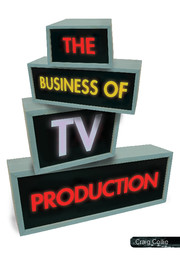Book contents
- Frontmatter
- Contents
- Preface
- Diagrams and tables
- Abbreviations
- Part A Opiate of the people: the television industry
- Chapter 1 Origins and growth of a global medium
- Chapter 2 The digital revolution
- Chapter 3 The industry in Australia
- Chapter 4 Television genres
- Part B Massage parlour: development and funding of a project
- Part C Riding the tiger: management of the production
- Part D A nod to the gatekeepers: the environment of television
- Index
- References
Chapter 3 - The industry in Australia
Published online by Cambridge University Press: 05 June 2012
- Frontmatter
- Contents
- Preface
- Diagrams and tables
- Abbreviations
- Part A Opiate of the people: the television industry
- Chapter 1 Origins and growth of a global medium
- Chapter 2 The digital revolution
- Chapter 3 The industry in Australia
- Chapter 4 Television genres
- Part B Massage parlour: development and funding of a project
- Part C Riding the tiger: management of the production
- Part D A nod to the gatekeepers: the environment of television
- Index
- References
Summary
Nearly every Australian home has a television set: 67% of homes have two or more sets and 28% have three or more. At the prime time of viewing (7–9 pm) 60% of homes are tuned in with the result that commercial television broadcasters are able to capture a substantial (although not a major) share of the nation's advertising revenue. As in the United States, television broadcasters have enjoyed considerable stability until recent years, with profits ranging from reliable to considerable. A key to this has been a structuring of the industry as a dual system of public and commercial broadcasters. Now, new technology is driving new delivery platforms, with consequent fragmentation of the mass audience. Broadcasters have to worry about a trend to narrowcasting for niche audiences as they try to ensure that they can prosper from the transition to digital television. Pay television and broadband on internet are posing challenges to the dominance of FTA television. Video content on mobile phones and other podcasting threaten to add to this in the very near future, along with mobile television, broadcasting directly to mobile phones. It's in younger viewers that the drift from television is felt most keenly, with the competing attraction of interactive computer-based entertainment. The Australian average daily television usage by viewers under 24 has fallen 20%.
Although there is a claim of an Australian as an early developer of television transmission – Henry Sutton is said to have designed a ‘telephane system’ in the 1880s to transmit pictures of the Melbourne Cup from Flemington to Ballarat – Australia, by and large, has held back to see what others were doing, to see what worked and what didn't in the early days of television.
- Type
- Chapter
- Information
- The Business of TV Production , pp. 39 - 59Publisher: Cambridge University PressPrint publication year: 2007



